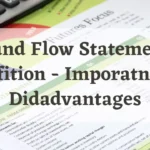A provision is the sum of the amount set aside by charging against the profit and loss account. It is created for meeting a known loss or liability. It is maintained for meeting an anticipated loss or liability of an uncertain amount. Such an amount of anticipated loss or liability of uncertain amount. Such an amount of anticipated loss or liability can only be estimated.

If the present regular transactions undoubtedly bring certain losses or liabilities of the unknown amount in the future then provisions should be made for them in the current year’s books. Such provisions should be made every year by debiting the profit and loss account without considering whether the business is in profit or loss. A provision is always created for the specific proposal. It is not meant for distribution to the shareholders. The provision, in fact, reduces the figure of business profit and not the figure of divisible profit.
Generally, a business maintains different types of provisions for some specific purposes.
1. Provision for taxation
2. Provision for discount.
3. Provision for bad and doubtful debts.
4. Provision for repairs and renewals.
Objectives of Provision
Some of the important objectives of maintaining provision are as follows:
1. To meet anticipated losses and liabilities
Provisions are created for meeting anticipated losses and liabilities such as provision for bad and doubtful debts, provision for discount on debtors, and provision for taxation.
2. TO meet known losses and liabilities:
Provisions are created for meeting known losses and liabilities such as provision for repair and renewals.
3. TO present a correct financial statement
In order to present correct financial statements and to report true profit and financial position, the business must maintain provision for known liabilities and losses.
A provision is the amount set aside by debiting the profit and loss account for a specific purpose. It is maintained to meet known loss or liability the amount of which is not certain.




